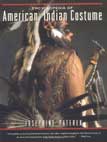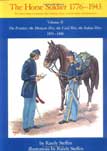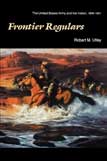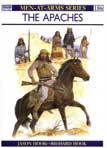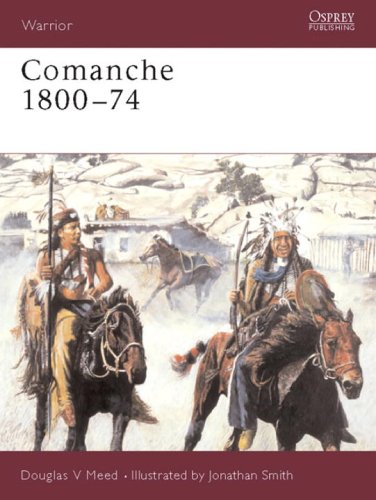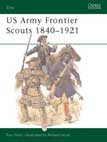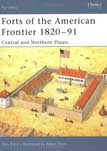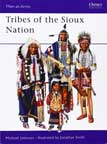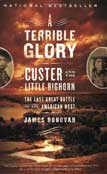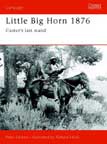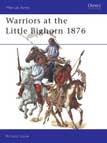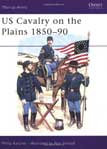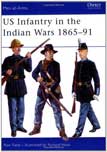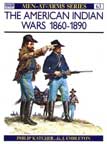

Slipping away from us in these times of the homogenization of culture are the traditions of older societies, some of them dating from 9000 B.C., who understood and were in tune with the changing vistas of the North American continent. Practical, yet with an eye for beauty, these peoples clothed themselves in a vast array of styles that will be forgotten unless preserved. The Encyclopedia of American Indian Costume offers complete descriptions and cultural contexts of the dress and ornamentation of the many nations that have shared this continent. The book is divided into ten cultural regions, with each chapter giving an overview of the regional clothing. Tribal information includes men's and women's basic dress, footwear, outerwear, hair styles, headgear, accessories, jewelry, armor, special costumes, garment decoration, face and body embellishment, and transitional dress after European contact. This beautifully designed book contains more than 150 photographs and illustrations.
This is the second volume of a projected four-volume work. In Volume I the author delineated the uniforms, arms, accouterments, and equipment of the period from 1776 to 1850. In this volume he addresses himself to the eventful, bloody tragic mid-nineteenth century. Here he describes the dress and equipment of the horse soldier of the early frontier, the Mexican War, the Civil War, and the wars with the Indians. The uniforms, insignia, decorations, arms, and horse gear are described and profusely illustrated in three color plates and 126 black-and-white drawings. For his models the author used actual uniforms and equipment, supported by official government documents.
Among the subjects covered in this volume are the dress and equipment manufactured to meet the needs of cavalrymen at the early outposts east of the Missouri and in the brief War with Mexico that was a testing ground for the Civil War to come. (Ironically, much of the equipment and arms used by the United States Cavalry was designed by officers and government employees who later joined the Confederates.)
After the war came a new duty for the horse soldier—pacification of the hostile Indians of the West. As the needs of this harsh and demanding duty became clear, radical modifications were made to meet them. All these changes are described and minutely illustrated in this, the second volume of an indispensable reference work for American historians.
In Frontier Regulars Robert M. Utley combines scholarship and drama to produce an impressive history of the final, massive drive by the Regular Army to subdue and control the American Indians and open the West during the twenty-five years following the Civil War.
Here are incisive accounts of the campaign directed by Major General William Tecumseh Sherman—from the first skirmishes with the Sioux over the Bozeman Trail defenses in 1866 to the final defeat and subjugation of the Northern Plains Indians in 1890. Utley's brilliant descriptions of military maneuvers and flaming battles are juxtaposed with a careful analysis of Sherman's army: its mode of operation, equipment, and recruitment; its lifestyle and relations with Congress and civilians.
Proud of the United States Army and often sympathetic toward the Indians, Utley presents a balanced overview of the long struggle. He concludes that the frontier army was not "the heroic vanguard of civilization" as sometimes claimed and still less "the barbaric band of butchers depicted in the humanitarian literature of the nineteenth century and the atonement literature of the twentieth." Rather, it was a group of ordinary (and sometimes extraordinary) men doing the best they could.
The Apache culture of 1850 was a blend of influences from the peoples of the Great Plains, Great Basin and the South-West, particularly the Pueblos, and – as time progressed – from the Spanish and American settlers. This fascinating work by Jason Hook examines the Apaches, their social structure, religion and warcraft, and outlines the Apache wars and conflicts with the American, including the dramatic story of Crook and Geronimo. This absorbing volume is illustrated with a wealth contemporary photographs, museum examples and eight stunning full page colour plates by Richard Hook, making it the perfect book for anyone interested in this fascinating culture.
In the 18th and 19th centuries, the numerous tribes of mounted Comanche warriors were the "Lords of the Southern Plains". For more than 150 years, these ferocious raiders struck terror into the hearts of other plain tribes, Mexican villagers and Anglo settlers in frontier Texas. Their dominion stretched from southern Colorado and Kansas into northern Mexico. This book documents the life and experiences of a Comanche warrior at the peak of their dominance. Following a hypothetical figure through a lifetime, it covers key social and cultural aspects as well as documenting the methods and equipment that they used to wage war.
The role of the Frontier scout in the US Army during the period of westward expansion, was often far more important than that of the commanding officer. They possessed a priceless knowledge of the geography, people and characteristics of the great, unknown American hinterland and from the earliest days of exploration, the US Army depended on its scouts to guide troops across the plains and through the mountains as they guarded the nation's frontier settlements. This book tells the colourful story of these frontier men, covering many famous scouts such as 'Wild Bill' Hickok and 'Buffalo Bill' Cody.
A major period of westward expansion took place in the United States during the first half of the 19th century. Fur trading, the coast-to-coast railroad, the California gold rush and the removal of Native American tribes both facilitated and encouraged America's "manifest destiny" to become a transcontinental nation. The task of protecting the settlers from the tribes that inhabited the Great Plains fell to the US Army, and to do this an extensive network of permanent forts was created via construction and acquisition. This title examines why the forts were built, as well as their design, defensive features and the role they played in the settlement of the American West. The daily lives of the garrison soldiers and fort inhabitants are also covered, together with the fighting witnessed at key sites.
The horse culture of the tribes of the High Plains of North America lasted only some 170 years; yet in that time the sub-tribes of the Teton or Western Sioux people imprinted a vivid image on the world's imagination by their fearless but doomed fight to protect their hunting grounds from the inevitable spread of the white man. This text outlines the history, social organization, religion and material culture of the Santee, Yankton and Teton Sioux; rare early photographs include portraits of many of the great war chiefs and warriors of the Plains Indian Wars, and eight detailed plates record details of Sioux traditional costume.
In June of 1876, on a hill above a winding river called "the Little Bighorn," George Armstrong Custer and all 210 men under his direct command were annihilated by nearly 2,000 Sioux and Cheyenne. This devastating loss caused an uproar, and public figures pointed fingers in order to avoid responsibility. Custer, who was conveniently dead, took the brunt of the blame.
The truth, however, was far more complex. A TERRIBLE GLORY is the first book to relate the entire story of this endlessly fascinating battle, and the first to call upon all the vital new forensic research of the past quarter century. It is also the first book to bring to light the details of the army cover-up--and unravel one of the greatest mysteries in US military history.
Osprey's examination of one of the most controversial battles of the American Indian Wars (1775-1918). The death of George Armstrong Custer, and over half of his 7th Cavalry Regiment in the valley of the Little Big Horn on 25 July 1876, has become the most celebrated battle of the Indian Wars. It was the greatest, and the last, victory of the Native Americans over the United States military. Disobeying orders, Custer followed a trail to a large encampment of Indians and, without determining the numbers he faced split his command into three groups and attacked. In the resulting chaos Custer and more than half the troops under his command were killed.
The battle which took place on the Little Bighorn river on June 25, 1876 has passed into legend as “Custer's Last Stand”. This remarkable book is a unique analysis of the oral and pictorial evidence for the appearance of nearly 30 named Sioux and Cheyenne warriors who were present that day, and for their parts in the battle. The fruit of many years' study by one of today’s most internationally respected interpreters and illustrators of Native American material culture, it offers biographical notes and meticulously researched color reconstructions, together with rare photographs and pictographs.
Two events in the 19th century turned the minds of Americans westwards towards eventual and inevitable conflict with the Plains Indians. The first was victory in the Mexican-American War, which brought millions of acres of new land in the West. The second was the discovery of gold in California. One of the results of this migration was conflict with the Indians who inhabited the Plains. So it was natural that the Army, the nation's armed peace-keepers, should be sent to garrison the West. This book by Philip Katcher tells the absorbing story of the US cavalrymen who patrolled the Plains from 1850-90.
Thanks to Hollywood's many portrayals of the US Cavalry, it is little understood that the infantry played as great a part in the Indian Wars of the 1860s-80s, and were more consistently successful.
The great Paiute War of 1866, where the infantry of the most renowned Indian-fighting general, George Cook, excelled in battle, together with the role of other infantry units in the final subjugation of Geronimo's Apaches in 1886, are but two instances of their achievements.
Moreover, after the Custer massacre, it was the infantry under Gen Nelson Miles who out-fought Crazy Horse's Sioux in the Wolf Mountains in 1877; Crazy Horse christened them 'Walk-a-Heaps'.
The struggle against the Indians was the longest war in American military history and the Indians were formidable opponents. They knew the terrain, could live off the land and fielded some of the finest light cavalry in the world. Facing such a determined foe, one soldier even wrote: "The front is all around and the rear is nowhere." The US Infantry endured years of sporadic battles that were bitterly contested against an enemy who was fighting for their very survival.
Presenting an illustrated history of these critical but overlooked soldiers of the Indian Wars, and featuring their involvement in the legendary battles of Wounded Knee and Wolf Mountains, this narrative includes details of their tactics, training, uniforms and equipment culminating in the eventual "closing" of the American Frontier in 1890 and the final conquest of the indigenous inhabitants of North America.
The American Indian Wars, the most famous of which were fought on the great Western plains between 1860 and 1890, were among the most tragic of all conflicts ever fought. To the victor went no less than the complete domination of the continent, to the loser total extinction. Accustomed only to small scale skirmishing and raiding, the Indians were doomed from the start. They had never fought a European-style war with its constant pressure and co-ordinated strategies. Philip Katcher details the armies of both sides, paying particular attention to their organization and uniforms.
St. Fabian ends his reign as Catholic Pope (236-50)
Book of mother, published
Giovanni di Sabina elected Pope Sylvester III
1st English Parliament called into session by Earl of Leicester
Duke Wladyslaw Lokietek becomes King of Poland
Scottish King Edward Baliol resigns
Casa Contratacion (Board of Trade) found (Spain) to deal with American affairs
Christian II succeeds Johan I as Danish / Norwegian King
Cornerstone of Amsterdam townhall laid
Treaty of Andrussovo-ends 13 year war between Poland and Russia
1st American military court martial trial begins, Cambridge, Massachusetts
1st edition of Pieter It Hoens "Post of Neder-Rhijn" published
Hostilities cease in Revolutionary War
Samuel Ellis advertises to sell Oyster Island (Ellis Is), no takers
Pioneer African Baptist church organizes in Savannah, Georgia
John Marshall appointed US Chief Justice
Napoleon convenes great Sanhedrin, Paris
1st US geology book published by William Maclure
Dutch King Willem II crowned
China cedes Hong Kong to British
Investigator, 1st ship to effect northwest passage, leaves England
Dutch troops conquer Watampone in Celebes
Florida constitutional convention meets in Tallahassee
Elizabeth Cady Stanton becomes 1st woman to testify before Congress
"City of Boston" vanishes at sea with all 177 aboard
Hiram R Revels elected to fill unexpired term of Jefferson Davis
California Stock Exchange Board organized
British troops under Lord Chelmsford set camp at Isandlwana
Billy Barnes takes a hat-trick, England vs. Aust MCG
US Senate approves naval base lease of Pearl Harbor
1st basketball game played (Mass)
Ottawa Senators sweep Edmonton in 2 for Stanley Cup (2nd of 1910)
Dutch 2nd Chamber passes school laws
British submarine K5 leaves with man and mouse
Dagestan ASSR forms in RSFSR
Mountain Autonomous Republic established in RSFSR
Turkey declared in remnants of Ottoman Empire
USSR and Japan sign treaty of Peking, Seychelles back to USSR
2nd German government of Luther begins
1st feature talking motion picture taken outdoors, "In Old Arizona"
1st radio broadcast of "Lone Ranger" (WXYZ-Detroit)
Japan sends Henry Pu Yi as regent to Emperor of Manchuria
Edward VIII succeeds British King George V
1st Inauguration day on Jan 20th, (held every 4th years there-after)
Hitler proclaims to German parliament to exterminate all European Jews
Japanese invade Burma
Operation-Weiss: Assault of German, Italian, Bulgarian and Croatian
RAF drops 2300 ton bombs on Berlin
FDR sworn-in for an unprecedented 4th term as President
F Gouin follows De Gaulle as temporary leader of French government
Brigadier General Edwin K Wright, USA, becomes Deputy Director of CIA
J Edgar Hoover gives Shirley Temple a tear gas fountain pen
President Truman announces his point 4 program
"Dance Me a Song" opens at Royale Theater NYC for 35 performances
Suriname becomes independent part in Realm of the Netherlands
British army occupies Ismailiya, Suez Canal Zone
Louise Suggs wins LPGA Tampa Golf Open
1st live coast-to-coast inauguration address (Eisenhower)
1st US telecast transmitted to Canada-from Buffalo, New York
1st atomic sub, USS Nautilus, launched at Groton Conn
Buddy Holly records "Blue Days Black Night" in Nashville
Betsy Rawls wins LPGA Tampa Golf Open
Betsy Rawls wins LPGA Tampa Golf Open
KUED TV channel 7 in Salt Lake City, UT (PBS) begins broadcasting
Patrice Lumumba sentenced to 6 months in Belgian Congo
Arthur M Ramsay becomes Archbishop of Canterbury
Yugoslav ex-Vice President Milovan Djilas flees
"Kean" closes at Broadway Theater NYC after 92 performances
Beatles appear on Shindig (ABC-TV)
Byrds record "Mr Tambourine Man"
Generalissimo Francisco Franco meets with Jewish representatives to discuss legitimizing Jewish communities in Spain
JPL proposes modified Apollo flight to fly around Mars and return
US female Figure Skating championship won by Peggy Fleming
US male Figure Skating championship won by Tim Wood
Richard M Nixon inaugurated as President
University of Arizona reports 1st optical id of pulsar (in Crab Nebula)
20th NBA All-Star Game: East beats West 142-135 at Philadelphia
23rd NHL All-Star Game: East beat West 4-1 at St. Louis
Super Fight, computer mock championship between Ali and Marciano
Ard Schenk skates world record 1000m (1:18.8)
4th NFL Pro Bowl: AFC beats NFC 15-13
7th ABA All-Star Game: East 128 beats West 112 at Virginia
A college basketball game ends 210-67
Essex Comm College beats Englewood Cliffs 210-67 in basketball
5th NFL Pro Bowl: NFC beats AFC 17-10
29th NHL All-Star Game: Wales beat Campbell 7-5 at Philadelphia
George Bush, ends term as 11th Director of CIA
Mr Knoche, serves as acting Director of CIA
Columbia Pictures pays $9.5 million for movie rights to "Annie"
President Jimmy Carter announces US boycott of Olympics in Moscow
Super Bowl MVP: Terry Bradshaw, Pittsburgh, QB
Super Bowl XIV: Pittsburgh Steelers beat LA Rams, 31-19 in Pasadena
US female Figure Skating championship won by Linda Fratianne
US male Figure Skating championship won by Charles Tickner
52 Americans held hostage in Iran for 444 days freed
Adm Stansfield Turner, USN (Ret), ends term as 12th Director of CIA
Frank C Carlucci, ends term as Deputy Director of CIA
Ronald Reagan inaugurated as President
7 miners killed in an explosion in Craynor, Kentucky
Honduras constitution goes into effect
Piet Dankert elected Chairman of European Parliament
US female Figure Skating championship won by Rosalynn Sumners
Super Bowl XIX: SF 49ers beat Miami Dolphins, 38-16 in Stanford Super Bowl MVP: Joe Montana, San Francisco, QB
1st federal holiday honoring Martin Luther King Jr
Chunnel announced (railroad tunnel under Canal)
Military coup in Lesotho under General Major Lekhanya and Premier Leabua Jonathan
Anglican Church envoy Terry Waite taken hostage in Beirut, Lebanon
Arizona committee opens hearing on impeachment of Gov Evan Mecham
Bush inaugurated as 41st President and Quayle becomes 44th vice President
Reagan becomes 1st President elected in a "0" year, since 1840, to leave office alive
47th Golden Globes: Born on 4th of July, Driving Miss Daisy win
US 64th manned space mission STS 32 (Columbia 10) returns from space
"Black & Blue" closes at Minskoff Theater NYC after 829 performances
"Les Miserables, " opens at Pantages Theatre, LA
"Peter Pan" closes at Lunt-Fontanne Theater NYC or 45 performances
"Shogun - The Musical" closes at Marquis Theater NYC after 72 performances
13th UCP Telethon
Buffalo Bills beat LA Raiders 51-3 for AFC title
Jane Geddes wins LPGA Jamaica Golf Classic
US Patriot missiles begins shooting down Iraqi missiles
Australia beat India 2-0 to win the World Series Cup
Score begins selling international soccer cards
Adm Studeman, serves as acting Director of CIA
Bill Clinton inaugurated as 42nd President
"Love! Valor! Compassion!" opens at Walter Kerr NYC for 276 performances
1994-95 NHL Season begin after a lengthy strike
Russian ruble drops to 3,947 per dollar (record)
46th NHL All-Star Game: East beat West 5-4 at Fleet Center Boston
Australia defeat Sri Lanka 2-0 to win World Series Cup
US female Figure Skating championship won by Michelle Kwan
WPAT FM NYC radio station switches to English-Spanish format
Howard Stern Radio Show premieres in New Orleans LA on KKND 106.7 FM
Pakistan defeat West Indies 2-0 to win Aust one-day Series
Rock & Roll Hall of Fame inducts Mama & Papas & Eagles
Warner Brothers TV Network begins Tuesday night programming
